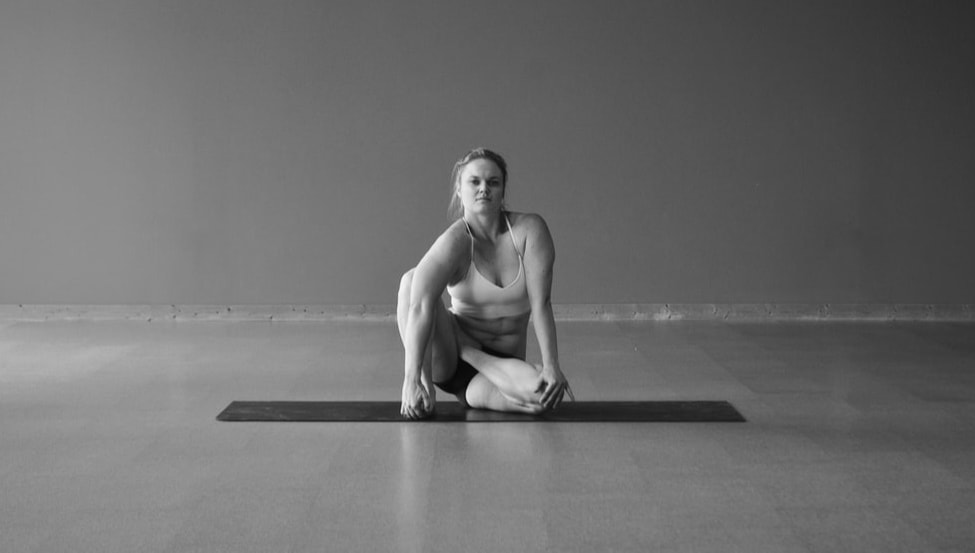|
The New York Times just reposted an interview with exercise physiologist Dr. Oliver Jay, asking if there are health benefits associated with sweating, and if more sweat means more benefit. This is a question that hits home to us as yogis who strive to build inner heat, and especially as part of the Bikram and Hot yoga communities where lots of extra heat is added for supposed increased benefits.
“There’s this entrenched idea that it’s good to ‘sweat things out,’” Dr. Jay said, but in fact “sweating, per se, provides no health benefits,” apart from preventing overheating. Exercise, especially vigorous exercise, raises the internal body temperature. "The benefits derive from the exercise itself," not the accompanying rise in body temperature or the sweat that is meant to cool us. Perspiring, in and of itself, does not provide or amplify those effects, Dr. Jay said. That situation doesn’t change if you’re sweating due to a hot environment. “Sweat is sweat,” he said. You will perspire more if the air is humid, he said, because sweat doesn’t evaporate efficiently in humidity, and it’s evaporation that actually cools your body. But you aren’t gaining extra health benefits from drenching your clothing with perspiration. CONSIDERING "HOT" YOGA We got our start in Bikram's class, where the temperature is 105 degrees and you sweat like crazy. There is a continuing trend toward making yoga hot to induce more sweating and increase muscle flexibility (which largely happens through numbing the nervous system, but that's another story). Also there is the "sauna therapy" argument, that when exposed to high temperatures the heart rate increases and the blood vessels dilate, improving cardiac and vascular function. There is new research that practicing yoga in high heat may have a positive impact on cholesterol levels. Contrarily, there is new research that many of the vascular benefits of yoga and stretching are gained at room temperature just as well as in a heated room. CONCLUSION? There are 3 main arguments for practicing yoga or exercising in the heat: 1) increased effectiveness of the exercise, as indicated by rise in body temperature and amount of sweat; 2) increased mobility and flexibility; and 3) benefits to the cardiac and especially vascular system. Argument #1 is simply not true. An exercise is not more beneficial when done in heat, and more sweat - even higher body temperature - does not mean more benefit (see the NY Times article). Argument #2 is a double-edged sword. Heat-induced flexibility may be beneficial to certain parts of the population, like the elderly or injured, but it is detrimental to those who are already flexible, encouraging hyper-mobility. For the general public it's a toss-up. Argument #3 is a good one, and it's gaining clarity with each passing study. Pure Action is funding research to try to tease out the vascular benefits that may come from heat without yoga, those that may come from yoga without heat, and those that are accentuated when the two are put together.
8 Comments
Joe K.
7/21/2017 04:11:17 pm
True, sweating isn't necessarily indicative of exercise benefit, but look through the newer research on heat shock proteins and heat acclimation. Heat exposure seems to stimulate a "hormetic" response that is dose dependent.
Reply
10/27/2017 04:28:36 am
This article is really helpful. I am shocked that heating and sweating have nothing to do with health. My thought about it is that it will help people to lose weight. My perception is probably wrong. I would do more research about this topic. I will also conduct some interview to dieticians who are experts in the field about this. This fact is mind-blowing. I want to check it myself. Thank you for sharing this. I had a good feeling.
Reply
David Lincecum
7/21/2017 07:10:39 pm
Heated practice is only good for those of a kapha prakriti. For vata the sweating is too drying and ultimately reducing to the vata body - contraindicated. The pitta person will be burning up ojas and causing damage the the already heated body, much of this damage directed at the vascular system and liver. The kapha individual can benefit from hot vinyasa yoga as the heat counteracts the cold quality of kapha and the vinyasa counters the stable quality. Studies using western modalities will always find mixed results- one will show benefit - others will not. Why? The test results will depend on the prakriti of people in the test. Of course the research will not consider this!
Reply
10/23/2019 06:49:28 pm
When it comes to sweating, words like hot and sticky come to mind. However, except that first impression, there are many benefits of sweating during yoga that you didn't know about:
Reply
12/28/2022 07:15:01 am
It's very helpful and informative article. Thank you "ghoshyoga" for this article
Reply
3/25/2023 12:30:20 am
You wrote this blog very well. Very knowledgeable. Thanks for sharing this
Reply
Leave a Reply. |
AUTHORSScott & Ida are Yoga Acharyas (Masters of Yoga). They are scholars as well as practitioners of yogic postures, breath control and meditation. They are the head teachers of Ghosh Yoga.
POPULAR- The 113 Postures of Ghosh Yoga
- Make the Hamstrings Strong, Not Long - Understanding Chair Posture - Lock the Knee History - It Doesn't Matter If Your Head Is On Your Knee - Bow Pose (Dhanurasana) - 5 Reasons To Backbend - Origins of Standing Bow - The Traditional Yoga In Bikram's Class - What About the Women?! - Through Bishnu's Eyes - Why Teaching Is Not a Personal Practice Categories
All
Archives
May 2024
|







 RSS Feed
RSS Feed